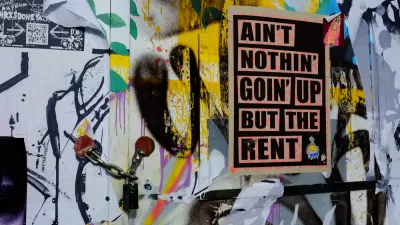Close to one-third of American neighborhoods have very few housing options for renter households, who tend to be disproportionately people of color and low-income families.

An article by Whitney Airgood-Obrycki and Sophia Wedeen for the Joint Center for Housing Studies of Harvard University highlights the lack of available rental housing in many suburban, higher-income neighborhoods, as revealed by a new analysis of data from the American Community Survey.
This matters because “Exclusionary land use quite likely contributes to the presence of these rental deserts and the resulting patterns of socioeconomic and racial segregation, since renters are disproportionately lower-income and people of color,” the authors write.
According to the authors’ definition, ‘rental deserts,’ which make up roughly 31 percent of residential neighborhoods in the United States, exist when less than 20 percent of housing units in an area are available or occupied as rentals. “With few affordable options for lower-income renters, the median household income in rental deserts is $86,000. Median incomes in high-rental neighborhoods, however, are less than half that at $42,000, while mixed-tenure neighborhoods fall in the middle at about $60,000.”
In rental deserts, less than 21 percent of household heads were people of color, compared to 67 percent in high-rental neighborhoods. “Increasing the multifamily supply and increasing rental options in neighborhoods where few exist can help expand the geographic options available to renters, and reducing zoning barriers is a step in the right direction.”
The report recommends zoning changes, but cautions that they’re not a silver bullet. “Building homes at lower price points and expanding housing subsidies in a range of neighborhoods will also be necessary to create socioeconomically integrated, mixed-tenure communities.”
FULL STORY: RENTAL DESERTS PERPETUATE SOCIOECONOMIC AND RACIAL SEGREGATION

Alabama: Trump Terminates Settlements for Black Communities Harmed By Raw Sewage
Trump deemed the landmark civil rights agreement “illegal DEI and environmental justice policy.”

Planetizen Federal Action Tracker
A weekly monitor of how Trump’s orders and actions are impacting planners and planning in America.

The 120 Year Old Tiny Home Villages That Sheltered San Francisco’s Earthquake Refugees
More than a century ago, San Francisco mobilized to house thousands of residents displaced by the 1906 earthquake. Could their strategy offer a model for the present?

Ken Jennings Launches Transit Web Series
The Jeopardy champ wants you to ride public transit.

BLM To Rescind Public Lands Rule
The change will downgrade conservation, once again putting federal land at risk for mining and other extractive uses.

Indy Neighborhood Group Builds Temporary Multi-Use Path
Community members, aided in part by funding from the city, repurposed a vehicle lane to create a protected bike and pedestrian path for the summer season.
Urban Design for Planners 1: Software Tools
This six-course series explores essential urban design concepts using open source software and equips planners with the tools they need to participate fully in the urban design process.
Planning for Universal Design
Learn the tools for implementing Universal Design in planning regulations.
Clanton & Associates, Inc.
Jessamine County Fiscal Court
Institute for Housing and Urban Development Studies (IHS)
City of Grandview
Harvard GSD Executive Education
Toledo-Lucas County Plan Commissions
Salt Lake City
NYU Wagner Graduate School of Public Service





























